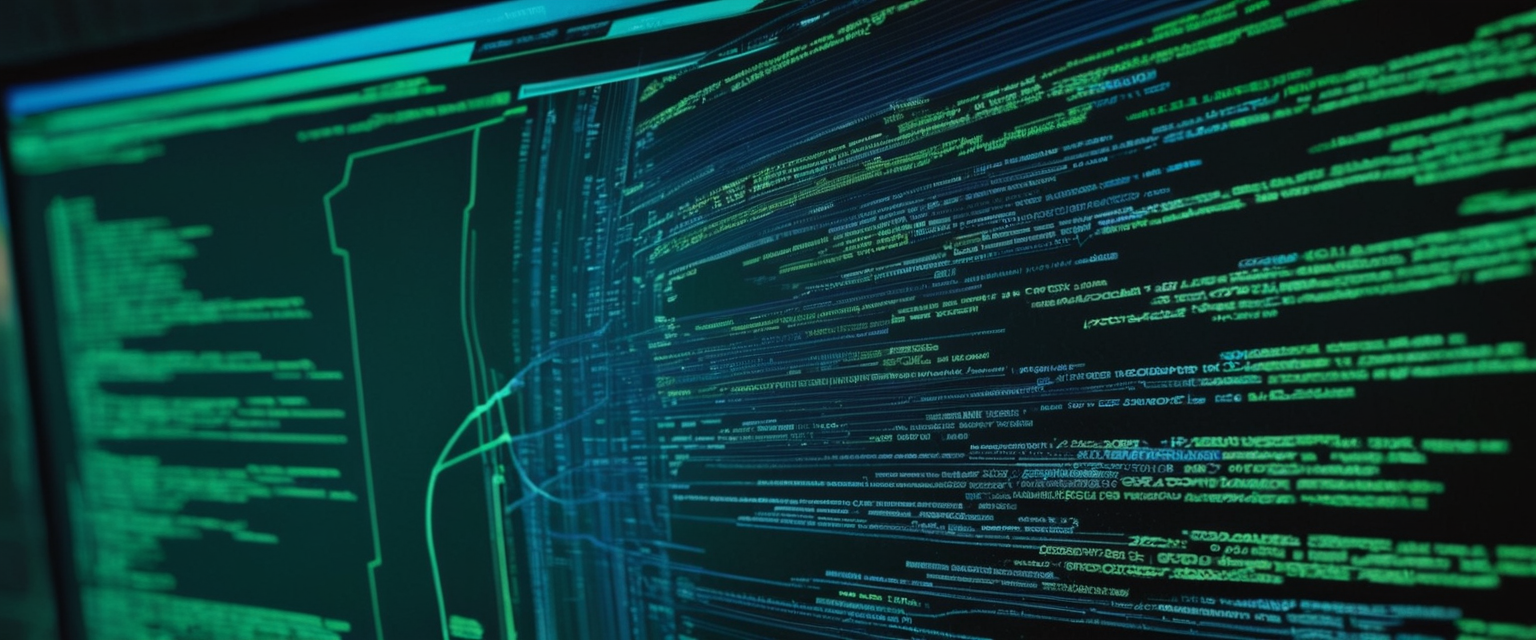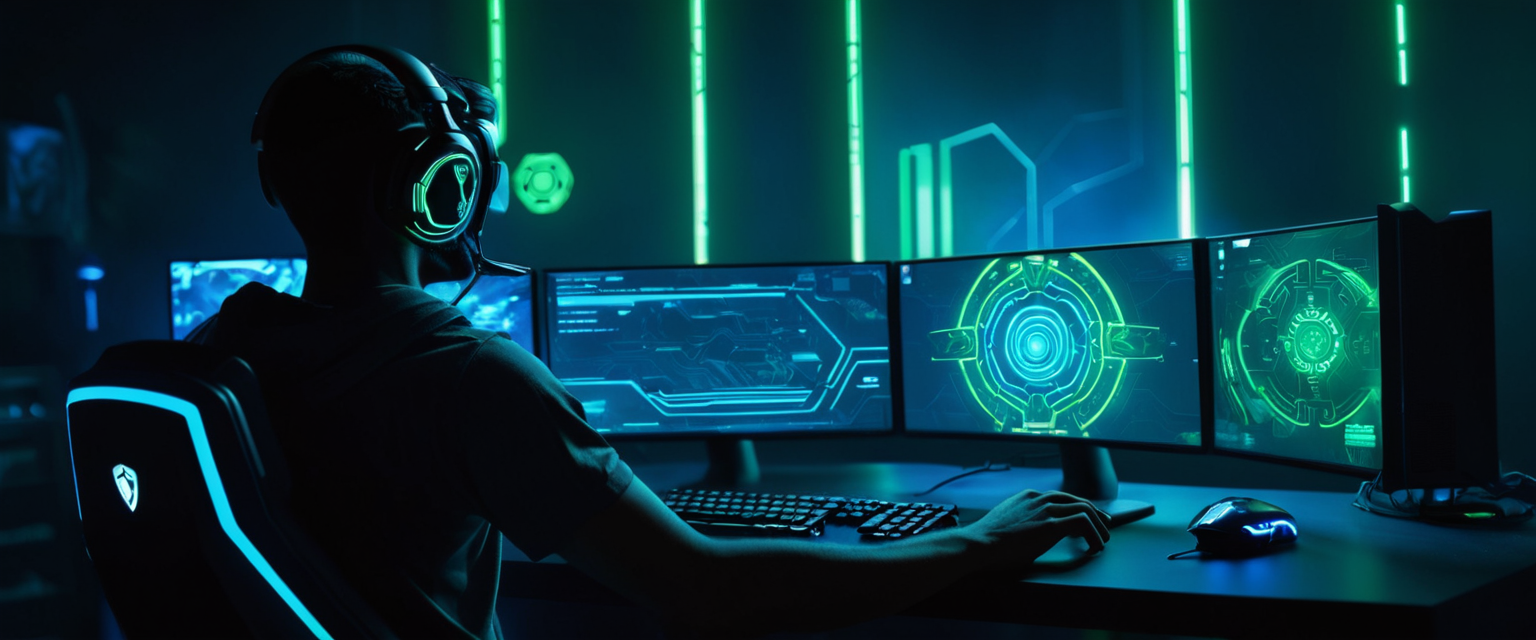
Gaming mods and add-ons represent one of the most creative and engaging aspects of modern gaming culture, allowing players to customize and enhance their experiences with community-created content. However, this thriving ecosystem has simultaneously become a prime vector for cybercriminals targeting gamers of all ages with sophisticated malware, account stealers, and ransomware. Between Q2 2024 and Q1 2025, security researchers detected 19,038,175 attempted attacks using the names of popular games to distribute malicious files disguised as mods and cheats. This alarming volume demonstrates that gaming mods have evolved from a peripheral concern into a critical security issue requiring comprehensive protection strategies. This report examines the multifaceted threat landscape surrounding gaming mods and add-ons, analyzes the distribution mechanisms employed by threat actors, explores notable malware campaigns that have impacted gaming communities, provides evidence-based guidance on identifying compromised content, and presents actionable strategies for maintaining security while enjoying the benefits of game modifications and customization features.
The Evolving Threat Landscape of Gaming Malware
The gaming industry’s growth has attracted increasing attention from cybercriminals seeking to exploit the passion, engagement, and financial investment of millions of players worldwide. Gaming mods and add-ons present particularly attractive targets for threat actors because they combine multiple favorable conditions for successful attacks. Players downloading mods are often motivated by urgency, curiosity, or the desire for competitive advantages, emotional states that criminals deliberately exploit to lower user defenses. The most frequently exploited game titles remain remarkably consistent due to their sustained cultural relevance and large player bases. During the reported period from Q2 2024 to Q1 2025, Grand Theft Auto led with 4,456,499 attack detection attempts, followed by Minecraft with significant detection numbers, and Call of Duty rounding out the top three most-targeted titles. This consistency indicates that cybercriminals recognize the enduring appeal and modding communities surrounding these franchises.
The types of malware distributed through gaming mods have become increasingly diverse and sophisticated. Downloaders represent the most widespread threat, accounting for over 17.7 million attempted attacks and typically delivering additional unwanted software to compromised systems. These downloaders function as delivery mechanisms for secondary payloads, giving attackers flexibility in their malicious objectives. Adware follows as the second most prevalent threat type, detected in 533,157 attempts, often generating revenue for attackers through advertising networks while potentially enabling further compromise. Trojan horses, with 255,639 detected attempts, provide attackers with direct access to compromised systems and are frequently used to establish persistent backdoors for long-term exploitation. The sophistication of these threats extends beyond simple code distribution; modern gaming malware incorporates advanced evasion techniques specifically designed to bypass security measures and analysis tools.
Beyond traditional malware, gaming accounts themselves have become valuable commodities in underground markets. Gaming credentials hold significant monetary value because they represent accumulated progress, rare items, virtual currency, and in-game purchases that cannot be easily replicated. Researchers have observed stolen gaming accounts actively trading on closed forums and Telegram channels, with trading activity becoming increasingly accessible and widespread. This marketplace expansion incentivizes attackers to create sophisticated credential-stealing malware capable of extracting login information from multiple platforms. When a gamer’s account is compromised, the consequences extend far beyond the immediate gaming platform, potentially compromising connected services including Discord, email accounts, payment information, and social media profiles linked through authentication services.
Distribution Methods: How Malware Spreads Through Mods and Add-Ons
Cybercriminals employ multiple sophisticated distribution channels to deliver malicious files disguised as gaming mods and add-ons, leveraging the complex ecosystem of modding platforms, community forums, and peer-to-peer sharing mechanisms. The fundamental technique involves creating files that appear legitimate by using game names, mod descriptions, and visual presentation elements that closely mimic authentic modifications. These files are then distributed through channels where gamers actively search for content, creating a deceptive experience that exploits user trust in community platforms and file-sharing services.
Community forums and dedicated modding websites represent primary distribution vectors because they combine searchability, discoverability, and perceived legitimacy. Attackers create accounts on these platforms and upload malicious archives, often using generic descriptions that could match legitimate mod functionality. Discord servers dedicated to gaming communities have become increasingly popular distribution channels, particularly for newer players less familiar with legitimate modding sources. Attackers establish Discord servers or join existing gaming communities, then share download links to malicious files using embedded messages or pinned content that appears credible within community discussions. The ephemeral nature of Discord communication and the challenge of moderating large communities make this platform particularly attractive to threat actors.
MediaFire and similar file-hosting services have been exploited for delivering malicious mod installers because these platforms host legitimate content alongside compromised files without providing robust security screening for gaming-specific content. The ease of uploading files and generating shareable links, combined with the platform’s apparent legitimacy to casual users, creates ideal conditions for malicious distribution. Researchers investigating malicious campaigns targeting gamers have identified fake installers specifically designed to appear as legitimate mod managers or game launch tools, creating additional layers of deception that convince users they are obtaining legitimate software.
The technical sophistication of malicious distribution has increased substantially through the development of stealer malware families specifically engineered to extract gaming credentials. The Hexon stealer, identified through attacks targeting gamers in 2024 and 2025, was designed to extract data from multiple gaming platforms including Steam, Roblox, Minecraft, Epic Games, and Discord. The malware was subsequently rebranded as Leet stealer, marketed as an “upgraded” product with enhanced capabilities including sandbox evasion mechanisms. These rebranding efforts represent intentional business evolution within the criminal underground, where malware-as-a-service operators compete for customers by offering new features and improved functionality. Leet stealer’s introduction of sandbox evasion represents a significant threat escalation; the malware checks the infected machine’s public IP address and system specifications, then terminates execution if it detects indicators of virtual machine or analysis environments. This capability enables the malware to successfully evade detection by security researchers while functioning normally in real-world scenarios where users lack advanced analysis environments.
Notable Malware Campaigns and Case Studies
The gaming security landscape provides several instructive case studies that illustrate the evolving sophistication and scale of threats targeting this community. The Fracturiser malware incident in Minecraft modding communities during 2023 represents one of the most significant coordinated attacks on a specific gaming community. This malware spread through popular Minecraft mods and modpacks, exploiting the common practice of updating modifications to include new features or bug fixes. Criminal actors compromised the GitHub repositories of established mod developers, then uploaded new versions containing malicious code to platforms like CurseForge. This approach of targeting established creators rather than only creating fake mods from scratch demonstrates sophisticated threat actor methodology and understanding of community dynamics.
Fracturiser incorporated advanced evasion techniques specifically designed to avoid detection by security researchers and sandboxed analysis environments. The malware included a class titled VMEscape that detected sandboxed Windows environments by checking for the WDAGUtilityAccount, which is part of the Windows Defender Application Guard. Upon detecting such analysis environments, the malware would halt execution, preserving its functional code to analyze later when executed on unprotected systems. Additionally, Fracturiser created temporary directories and attempted to manipulate the system clipboard, creating shortcuts that appeared to be legitimate files but actually invoked the malware. This technique would compromise users through familiar interaction patterns they had grown accustomed to, bypassing their security awareness since the malicious shortcuts visually appeared identical to expected files.
The emergence and rebranding of Hexon to Leet stealer demonstrates the professional, business-like operations underlying gaming malware development. Kaspersky GReAT experts observed the original Hexon stealer developer announcing the launch of Leet as an upgraded product on underground forums and offering existing customers a 50% discount to encourage migration to the new version. This marketing approach mirrors legitimate software development practices, indicating the criminal operators view malware development as a sustainable business rather than isolated attacks. The discount incentive demonstrates customer relationship management tactics that would be expected in legitimate software businesses, revealing the organized nature of contemporary gaming malware operations.
The Chemia case study from 2024-2025 illustrates how malware can be distributed through apparently legitimate game storefronts and early access platforms. Chemia appeared to be a survival game in Early Access, complete with professional-looking storefront listings and requests for playtest access. Investigations revealed the “game” was actually bundled with three different malware families designed to steal data and establish backdoors for subsequent exploitation. Despite the professional appearance of the game listing and marketing materials, the “studio” behind Chemia had no credible footprint in legitimate gaming development circles. This case demonstrates that visual legitimacy and professional presentation no longer provide reliable indicators of safety; sophisticated threat actors now invest substantial effort in creating convincing facades for their operations.

Identifying Compromised and Malicious Mods
Distinguishing between legitimate game modifications and malicious files requires understanding the technical characteristics and behavioral patterns that differentiate genuine community creations from criminal operations. For legitimate mods, particularly those distributed through established platforms, security scanning has become standard practice. Nexus Mods, one of the primary distribution platforms for PC game modifications, implements automated security processes where all uploaded content undergoes multiple security checks and virus scans before becoming available for download. Files that fail security checks are quarantined and require manual review by community moderators before unlock. This multi-stage approach provides reasonable assurance regarding Nexus Mods content, though not absolute guarantees of safety.
When examining potential mods for safety, several indicators warrant investigation and caution. The reputation and longevity of content on legitimate platforms provide meaningful data; a mod downloaded by millions of users, endorsed by thousands, and available for multiple years represents substantially lower risk than recently uploaded content by newly registered users. This principle follows basic epidemiological reasoning: malware that affects millions of users would be rapidly detected by security vendors and platform moderators, whereas newly uploaded malware might evade detection initially. The professional quality of mod design and infrastructure represents another meaningful indicator; authentic mods typically feature detailed documentation, comprehensive feature descriptions, and often include demonstration materials showing the modification in operation. Conversely, malicious files frequently feature generic descriptions, minimal documentation, and suspicious language that creates artificial urgency such as “act now,” “limited access,” or other pressure tactics.
The sources from which mods are downloaded merit careful evaluation because not all modding platforms implement equivalent security measures. Steam Workshop benefits from Valve’s infrastructure and moderation capabilities, reducing but not eliminating malware risks. Downloads directly from official game developer sites carry lower risk than third-party repositories. Established platforms like Nexus Mods implement layered security approaches including automated virus scanning and community reporting mechanisms. Conversely, less-known forums, generic file-hosting services, or direct links provided through unsolicited channels carry substantially elevated risk. The CurseForge incident of June 2023, where malicious actors uploaded compromised Minecraft mods resulting in widespread Fracturiser distribution, demonstrates that even established platforms can be successfully attacked when threat actors gain account access to legitimate creators.
Technical examination of suspicious mod files using tools like VirusTotal provides valuable additional validation. VirusTotal aggregates results from over 70 antivirus engines, providing comprehensive scanning capabilities unavailable through individual security vendors. When analyzing mod files through VirusTotal, files with 90% or greater negative results (indicating clean status across most vendors) can reasonably be considered safe, with remaining detections likely representing false positives from overly aggressive heuristics. However, this evaluation requires judgment; a mod that triggered minimal detections from obscure vendors while testing clean against major antivirus vendors likely represents a false positive, whereas a file flagged by multiple major antivirus vendors warrants avoidance regardless of overall detection rate.
File structure and composition provide technical indicators of legitimacy. Legitimate game mods typically consist of data files, scripts, textures, and other game-specific content without including executable files (.exe or .dll files). Mods that contain unexpected executable files or attempt to modify system files warrant immediate suspicion. The presence of suspicious installer applications or setup programs claiming to “install” simple game modifications represents a significant warning sign; authentic mods typically involve copying files to designated directories without elaborate installation procedures. For Minecraft specifically, mods should consist primarily of .jar files or configuration files; the presence of other executable types suggests malicious intent.
Safe Practices for Downloading Gaming Mods
Implementing comprehensive safety practices when downloading and installing gaming mods requires combining technical precautions with operational discipline and informed decision-making. The foundational principle involves limiting downloads to established, reputable platforms that implement security screening and community verification processes. Platforms including Steam Workshop, Nexus Mods, ModDB, and mod.io have invested in security infrastructure and implement various verification processes. These platforms employ automated virus scanning, community reporting mechanisms, and moderator review processes that create multiple defensive layers. Conversely, direct downloads from unfamiliar websites, suspicious Discord servers, or generic file-sharing sites bypass these protections and should be avoided regardless of claimed mod quality.
When downloading mods from established platforms, reading user reviews and checking for community feedback regarding recent updates provides valuable risk assessment data. Legitimate mod communities engage in active discussion about features, bugs, and compatibility issues; these discussions create a record that can be reviewed before downloading. Conversely, mods with no community engagement, suspiciously generic positive reviews, or reviews that sound artificial and robotic warrant avoidance. Checking the mod creator’s history and credibility within the community provides additional context; established creators with multiple well-reviewed mods over extended periods represent lower risk than first-time uploads. Many modding platforms display creator reputation metrics, update frequencies, and community engagement levels that facilitate rapid risk assessment.
The practice of enabling and maintaining comprehensive antivirus protection represents a critical prerequisite for safe modding. Gaming-optimized antivirus solutions should include multiple protective layers including real-time scanning, behavioral analysis, and sandboxed execution environments where possible. Solutions like Bitdefender, Norton 360, TotalAV, and McAfee provide gaming-specific features including automatic gaming mode that suspends notifications and defers non-critical scans when gaming is detected. These gaming-optimized antiviruses balance security with gaming performance, ensuring protection remains active while minimizing impact on frame rates and responsiveness. Real-time protection should remain enabled even during gameplay, despite earlier recommendations to disable antivirus for performance; contemporary gaming antiviruses have achieved sufficient optimization that performance impact is minimal compared to security benefits.
Creating and maintaining file backups represents an essential defensive practice that enables recovery if malware circumvents preventive measures. Windows File History provides built-in backup functionality that creates periodic snapshots of user files, enabling point-in-time restoration if compromise occurs. Setting File History to update frequently and retain backups for extended periods creates redundancy that protects against ransomware and destructive attacks. External drives, network-attached storage (NAS) devices, or cloud backup services provide additional backup layers; the most resilient backup strategies employ multiple independent mechanisms ensuring that no single malware attack compromises all backup copies. Gaming saves, personal documents, and valuable files should receive priority in backup strategies since these represent the data most likely to be targeted by attackers.
System restoration practices provide valuable recovery options if malware successfully compromises a system. Regular system restore points created before mod installation enable restoration to clean system states if suspicious behavior develops. Windows automatically creates restore points during system updates and before software installations; manually creating additional restore points before adding significant mod collections provides additional insurance. System Restore cannot address all malware infections, particularly sophisticated threats that modify system files below the operating system level, but it provides a rapid recovery option for many common infections that primarily modify user-level files and configurations.
Trusted Platforms and Their Security Measures
The landscape of mod distribution platforms has evolved to incorporate increasingly sophisticated security measures reflecting the severity of gaming malware threats. Understanding the security implementations of major platforms informs decisions regarding where to obtain modifications. Steam Workshop represents the largest centralized modding platform for Valve’s titles, implementing several protective mechanisms including automated malware scanning, community reporting, and developer verification processes. Steam’s hosting infrastructure subjects all workshop mods to scanning before publication, and suspicious files are flagged for manual review. While not perfect, this process has proven effective at preventing obvious malware from reaching users; the extreme rarity of successful malware distribution through Steam Workshop reflects the effectiveness of these mechanisms compared to less-regulated platforms.
Nexus Mods has established industry-leading security practices for community modification platforms. All content uploaded to Nexus Mods passes through multiple security checks and virus scanning processes before becoming available for download. Files that fail security checks are quarantined and unavailable until manual review by moderators. The platform provides users with detailed security status indicators for each file, displaying whether files have passed both internal security checks and VirusTotal scans, passed internal checks only, remain unscanned, are currently under scan, or have failed security screening. This transparent approach enables users to make informed decisions regarding file safety while clearly indicating scanning status. False positives occasionally occur as antivirus vendors update their detection algorithms; Nexus Mods documentation acknowledges this reality and provides guidance on distinguishing false positives from genuine threats.
ModDB operates similarly to Nexus Mods with community-managed moderation and virus scanning of submitted content. The platform’s reputation and community engagement provide meaningful assurance regarding content quality and safety. Mod.io has emerged as a newer modding platform emphasizing content security and providing studios with comprehensive moderation tools. Mod.io implements automatic virus and malware scanning for all uploaded files using multiple commercial tools and in-house systems. When viruses are suspected, mods are immediately removed and detailed reports are provided through moderation dashboards, enabling studios to review the content, restore it, or permanently delete it as appropriate.
These established platforms contrast sharply with ad-hoc distribution mechanisms including direct downloads from unknown websites, unverified Discord channels, or generic file-hosting services lacking gaming-specific security measures. When analyzing where to download mods, considering whether the platform has invested in security infrastructure, implemented abuse reporting mechanisms, and employed active moderation provides reliable indicators of likely safety compared to less-regulated alternatives.

Antivirus and Ransomware Protection for Gamers
Implementing effective antivirus and ransomware protection specifically tailored to gaming requirements represents an essential component of comprehensive security strategy for players downloading mods and add-ons. Gaming-specific antivirus solutions must balance security effectiveness with gaming performance, a requirement that standard business-focused antivirus packages may not adequately address. Leading gaming antiviruses including Norton 360 for Gamers, Bitdefender, TotalAV, and McAfee have developed dedicated gaming modes that automatically optimize security for gameplay scenarios.
Gaming mode functionality typically includes automatic notification suspension when fullscreen games are detected, deferral of non-critical scans until gaming concludes, and CPU/memory optimization to maximize gaming resources. TotalAV’s gaming mode automatically suspends notifications upon detecting gameplay, postpones scheduled scans, and frees system resources to ensure gaming performance remains uncompromised. Norton 360 for Gamers includes a dedicated gaming mode that manages resource allocation specifically for optimal gaming performance. These features prove particularly valuable for mod-heavy gameplay where system resources become constrained; antivirus operations consuming CPU and memory can introduce frame rate drops and stuttering that degrade gaming experience and interfere with competitive gameplay.
Real-time protection capabilities prove essential for detecting malware during mod installation and execution. Antivirus solutions employing behavioral analysis and sandboxed execution can detect zero-day malware variants that lack signatures in established virus databases. Behavioral analysis examines how processes execute, what files they access, what registry modifications they attempt, and what network connections they establish, identifying suspicious patterns characteristic of malware even when the specific malware variant has never been encountered previously. Cloud-powered scanning offloads resource-intensive analysis to remote servers, enabling real-time protection without constraining local system performance.
Anti-ransomware features deserve particular attention given the increasing targeting of gamers with ransomware payloads designed to encrypt valuable game files and demand payment for decryption keys. Ransomware-specific protection uses behavioral analysis to detect file encryption activity characteristic of ransomware before extensive encryption occurs. Bitdefender’s Ransomware Remediation feature automatically reverses encryption and restores files when ransomware is detected, providing critical recovery capability that enables continued gaming without paying ransom demands. Kaspersky’s anti-ransomware tools use cloud and behavioral analysis to detect suspicious application behavior and, if a computer is already infected, can undo some malicious actions that have already begun.
Controlled Folder Access, a feature built into Windows 10 and Windows 11, provides system-level ransomware protection by restricting what programs can access in protected folders. By default, this feature protects common user folders including Documents, Pictures, Videos, Music, Desktop, and Favorites, preventing unknown applications from encrypting critical files. When trusted applications are blocked from accessing these folders, users can manually whitelist them through settings. This feature provides valuable protection against ransomware while remaining transparent during normal operation; legitimate gaming and system operations continue uninterrupted while unauthorized encryption attempts are blocked.
Configuration of antivirus tools requires careful balancing between security and usability for gaming-specific scenarios. System scan schedules should be set to execute during times when gaming is unlikely, such as overnight or early morning hours, ensuring scans do not interfere with gameplay. Cloud protection levels should be configured conservatively; Bitdefender’s “High” cloud protection level combined with blocking detection stance provides strong protection against unknown threats without generating excessive false positives. Real-time protection should remain enabled universally; the protection benefits overwhelmingly outweigh any gaming performance impact from modern gaming-optimized antivirus solutions.
Account Security and Data Protection
Beyond device-level security, protecting gaming accounts themselves represents a critical component of comprehensive mod safety strategy, given that account credential theft constitutes one of the primary objectives of gaming-targeted malware. When account credentials are compromised, attackers can sell stolen accounts on underground markets, impersonate victims for social engineering attacks, access linked payment methods, and potentially compromise connected email accounts and social media profiles. Implementing strong authentication security specifically for gaming accounts provides essential additional protection.
Strong, unique passwords represent the foundational defense against account compromise. Gaming platforms including Steam, Discord, Epic Games, Roblox, and others function as centralized credential repositories through which attackers can access connected services. Password managers like LastPass and Bitwarden automatically generate strong passwords and store them securely, eliminating the cognitive burden of remembering complex credentials while ensuring each gaming account uses unique passwords that prevent cascading compromise if one platform is breached. Password managers with zero-knowledge architecture ensure that even the password manager provider cannot access user credentials, maximizing security against provider breaches or government demands.
Two-factor authentication (2FA) provides essential additional protection by requiring a second verification factor beyond passwords to access accounts. Multiple 2FA implementations exist including time-based one-time passwords (TOTP) using authenticator apps, SMS-based verification, hardware security keys, and biometric authentication. While SMS 2FA remains vulnerable to certain advanced attacks, it provides significantly better protection than passwords alone. Hardware security keys like FIDO2 U2F devices provide the strongest 2FA implementation by cryptographically verifying that users are authenticating with legitimate service websites, preventing credential theft through phishing or man-in-the-middle attacks. Steam, Discord, Epic Games, and other major gaming platforms support 2FA; enabling this feature represents a critical security hardening step.
Credential stealers specifically targeting gaming platforms have become increasingly sophisticated, with recent malware families like Hexon and Leet designed to extract authentication tokens and credentials directly from gaming applications and browsers. These tokens enable attackers to authenticate as legitimate users without knowing passwords, bypassing some password-based protections. Protecting against token theft requires preventing malware infection through the preventive measures discussed previously, then monitoring accounts for unauthorized access if compromise is suspected. Most major gaming platforms provide account access logs or suspicious activity warnings that notify legitimate users of unexpected logins from new devices or IP addresses, providing early warning of successful compromise attempts.
Discord accounts warrant particular attention regarding security, given that Discord simultaneously serves as a gaming community platform, a gaming launcher for games developed by companies like Riot Games, and a general communication platform used across the internet. Discord credentials compromised through gaming malware enable attackers to impersonate victims within gaming communities, potentially stealing Discord’s connected payment methods, and potentially compromising email accounts linked to Discord. Discord’s two-factor authentication protects against password-based compromise but does not prevent token theft; maintaining comprehensive endpoint security through the antivirus and malware prevention measures previously discussed represents the most effective defense against token-based attacks.
Payment information security represents another critical consideration for gaming accounts, particularly as gaming platforms increasingly integrate digital wallets and stored payment methods for convenient in-game purchases. Account compromise could enable attackers to make unauthorized purchases, affecting both credit card fraud protection and subscription services. Reviewing linked payment methods regularly and monitoring credit card statements for unauthorized gaming platform charges enables early detection of compromise. Removing stored payment information from gaming platforms and instead entering payment details during transactions, while slightly less convenient, eliminates the risk of stored payment method compromise during account breaches.
Recovery and Remediation Strategies
Despite comprehensive preventive measures, malware infections occasionally occur when novel threats escape detection systems or users encounter social engineering attacks that overcome technical defenses. Understanding recovery and remediation procedures enables rapid damage containment and system restoration if compromise occurs. The process of remediating infected gaming computers follows established cybersecurity best practices adapted for gaming-specific scenarios.
Upon suspecting malware infection, the immediate response should involve isolation to prevent further compromise or lateral spread to networked devices. For gaming computers on home networks, this means disconnecting the system from network connections, disabling wireless connections, and unplugging network cables to prevent malware communication with command-and-control servers and prevent infection of other networked devices. This isolation should occur before running antivirus scans, as some malware actively evades detection or interferes with security software once it detects scan activity. After network isolation, comprehensive malware scanning using up-to-date antivirus software provides detection and removal of identified malware. Most antivirus packages support Safe Mode scanning, which boots Windows with minimal drivers and background processes, limiting malware’s ability to interfere with detection. Safe Mode scanning accesses system files that might be locked by running malware processes, providing more thorough infection removal.
If suspicious malware is detected or user behavior indicates possible compromise (such as unauthorized purchases, stolen accounts, unexplained file modifications), running comprehensive scans using multiple antivirus vendors provides additional verification. VirusTotal enables submission of suspicious files for scanning against 70+ antivirus engines, potentially identifying threats that local antivirus misses. If malware is confirmed and removed through scanning, additional steps become necessary to ensure complete eradication. System Restore should be disabled during initial malware removal to prevent malware from being restored from infected restore points. After malware removal and antivirus confirmation that threats have been eliminated, System Restore can be re-enabled and new clean restore points created.
For particularly stubborn malware infections that persist despite antivirus attempts to remove them, or for infections involving sophisticated rootkits and kernel-level malware, complete system reinstallation may become necessary. Complete Windows reinstallation involves backing up important user data to external media (after verifying the backed-up data is clean), reinstalling Windows from trusted installation media, and restoring only verified-clean user data after system restoration. While time-consuming, complete system reinstallation provides absolute certainty that all malware has been eliminated, particularly valuable for systems hosting sensitive gaming or financial data.
For compromised gaming accounts, immediate action is necessary to regain account control and prevent attacker persistence. Password resets from a clean device (one that has undergone malware removal and confirmed clean) represents the first priority, changing passwords to strong unique values different from previously compromised credentials. Two-factor authentication should be verified enabled and functioning. Account access logs should be reviewed, removing any unexpected authorized sessions that represent attacker access. Linked payment methods should be reviewed, removing any suspicious entries and monitoring linked credit cards for unauthorized charges.
If persistent attacker access is suspected, some gaming platforms provide options to remotely terminate all existing sessions, forcing the attacker’s authenticated connections to be disconnected. This does not prevent re-authentication if the attacker still possesses the password, but it provides temporary access restoration while password changes are being made. After regaining account control, examining connected accounts and services becomes essential; if gaming account credentials were compromised, email accounts linked to gaming platforms should be secured, social media profiles connected through gaming platforms should be reviewed, and payment accounts linked through gaming platforms should be examined for unauthorized activity. The interconnected nature of digital identity means that compromise of one account can cascade to multiple services if appropriate follow-up security steps are not taken.
A Clean Modding Future
Gaming mods and add-ons represent a double-edged sword within the gaming ecosystem; they enable creative community expression and personalization that profoundly enhance gaming experiences for millions of players, yet simultaneously create security risks when malware actors exploit legitimate modding channels to distribute their payloads. The threat landscape has evolved from isolated incidents to organized criminal enterprises operating malware-as-a-service platforms, rebranding malware offerings, and actively marketing improved malware capabilities to criminal customers. The 19 million attempted attacks targeting gamers through mod channels during 2024-2025 represent not aberrations but rather the systematic industrialization of gaming malware distribution.
Maintaining security while enjoying gaming mods and add-ons requires implementing comprehensive, layered defenses combining technical protections, informed practices, and operational discipline. No single protection mechanism provides absolute security; instead, defense-in-depth approaches combining multiple mechanisms create redundancy ensuring that multiple malware evasion techniques must succeed for compromise to occur. Trusting established modding platforms with implemented security infrastructure provides lower risk than unvetted sources. Maintaining current, gaming-optimized antivirus and anti-ransomware protection with appropriate configuration for gaming scenarios provides technical detection and prevention capabilities. Implementing strong account security through unique passwords and two-factor authentication protects against credential compromise and account takeover even if endpoint malware is compromised. Regular backups and system restoration practices enable rapid recovery if protection systems fail. Maintaining security awareness and recognizing social engineering techniques used to distribute malware prevents user error from undermining technical protections.
Gaming communities thrive through creative modding content and user-generated enhancements; these communities should not be abandoned or avoided due to malware risks, but rather engaged with appropriate security precautions. By implementing the comprehensive protection strategies outlined within this report, gamers can participate fully in modding communities while substantially reducing risks of compromise, maintaining control of their gaming accounts and personal data, and preserving the continued evolution of game modifications that represent one of gaming’s most vibrant communities. The investment in security measures pays dividends through continued secure enjoyment of gaming without interruption from malware infections or compromised accounts, while contributing to community health by avoiding becoming vectors for malware spread to other players.
Protect Your Digital Life with Activate Security
Get 14 powerful security tools in one comprehensive suite. VPN, antivirus, password manager, dark web monitoring, and more.
Get Protected Now





